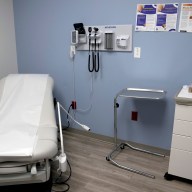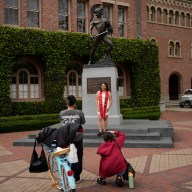No music. No morning debates. No more than two minutes late.
For the past 14 years, those rules of the road have taken Azim Sheikh-Taheri and his colleagues to work each day in suburban Seattle. As vanpoolers, they know their commute saves money, lowers stress and combats global warming.
But those benefits would take a back seat if they couldn’t get along.
“Establishing some ground rules is key because you’re almost like a family,” said Sheikh-Taheri, 50, a manager with the Washington State Department of Highways. “If you don’t, then you have problems.”
If cranking the tunes, talking politics at 6 a.m. or stopping off for coffee on the way into the office are your thing, then Sheikh-Taheri’s vanpool is not.
But, at a cost of about $5 (U.S.) a month — less than the price of two gallons of gas — and every second Friday off, there’s no shortage of colleagues signing up.
“The bottom line to me is that you do give up a little bit of freedom,” said Sheikh-Taheri, who drives the vehicle, which belongs to a publicly owned firm operating the vanpool, about 27 kilometres each way, making two stops to pick up seven people.
“But, if you put the benefits on one side and the drawbacks on another, there’s no comparison.”
Although the Seattle area has no subway, very limited commuter rail and is just building a light rail system, it’s getting special attention from Metrolinx, the body developing a regional transportation plan for Greater Toronto and Hamilton.
Its elaborate network of more than 350 kilometres of high-occupancy vehicle lanes and support programs make it “perhaps the most relevant HOV best practice” for the GTA, states a Metrolinx report released earlier this year.
In addition to the lanes criss-crossing the region, a half-dozen of the planned 20 new direct access ramps have been built, better integrating the network so drivers won’t have to travel through slower, single-vehicle traffic enroute.
There’s also a network of park-and-ride lots, widespread vanpooling, discounted downtown parking for those who drive in with others, and a guaranteed-ride program for people who may have to unexpectedly go home early or stay late.
Also, state legislation — the Commute Trip Reduction Law — requires companies with at least 100 full-time employees starting between 6 a.m. and 9 a.m. to develop a program to cut staff vehicle use through measures such as subsidies for van- and carpools and transit fares, flexible work schedules and telework opportunities. It involves more than 560,000 people at 1,100 worksites across Washington.
“It’s about encouraging behaviour change,” said Pam McInnes, employee transportation co-ordinator with the Washington State Department of Transportation. More than one-third of the department’s 1,700 staff in the region that includes Seattle participate in the program, through $50 (U.S.) monthly vanpool subsidies; breaks on bus, train and ferry trips; cash payments for walking or cycling; and other initiatives.
“Most people don’t get up each morning saying, `I want to save the world,’.” McInnes said. “This rewards them financially and also helps them feel good because they’re doing something good.”
In Ontario, there are 46 kilometres of HOV lanes on Highways 403 and 404, which, since opening in late 2005, are saving vehicle commuters up to 17 minutes and GO Transit buses between five and 10 minutes per trip, according to the provincial transportation ministry.
Last May, it pledged to expand that to 450 kilometres in the Greater Golden Horseshoe by 2031.
But the impact of that on congestion and pollution will be muted without “a cultural change” spurred by new laws and financial incentives to encourage companies and motorists to embrace commuting alternatives and different work schedules, said Mary Pickering, of the Toronto Atmospheric Fund.
“People won’t change their behaviour spontaneously,” she said.
Over time, Pickering said, people will see that they can save money, lower stress, get more family time and benefit the environment by ending — or at least limiting the frequency of — solo driving.
And, with heightened public concern about climate change and public health, frustration over ever-worsening road congestion and gas prices at more than $1 a litre, there’s “a perfect storm” buffeting commuters.
“If there was ever a time to start advocating these public policy changes, it’s now,” Pickering said.
More than just a car culture, we’re “a free parking culture,” said Brian Shifman, executive director of Smart Commute North Toronto, Vaughan, a government-sponsored promoter of driving alternatives. New and retrofitted buildings, especially in the suburbs, showcase some of those most environmentally sensitive features, but also have large lots of free parking for staff, who have no incentive to find other ways to work, he said.
Shifman suggests some options: require development applications to have plans for building transportation; offer businesses tax breaks to subsidize staff who carpool; change laws to allow wider use of vanpools; create an integrated, fully connected network of HOV lanes; improve walking and cycling networks as well as public transit.
Small acts can have a big impact on congestion, said Shifman. Smart Commute works with more than 50 employers across the GTA to ease staff commutes.
“You don’t have to change every day to be a more sustainable commuter,” he said. “Even if one day a week you take a bus, share a ride or work from home, you cut your greenhouse gases by 20 per cent.”
















